Culture in Arcerion
The culture of Arcerion is a combined shared heritage and social fabric that evolved with Arcerion through the nation's history. The historically Christian religious tendencies, interaction and immigration from Levantia, its status at the last bastion of Ardmore, as well as its distinct cultural blend of Ængle, Gaelic, and Ardmori cultures with some influences from the Indigenous peoples of the South Songun Civilization. In common speak, this may also be referenced as Arcer culture, or informally Arco culture. Howland Governorate, despite not being in Crona, and being an overseas territory of Arcerion, still has mostly shared traits and qualities of mainland Arcerion. The culture of Arcerion is largely homogeneous, however there are distinct regional demographic shifts, such as generational attitudes towards gender roles or the role of religion among younger generations. However, Arcer culture is largely a unified set of shared values, ethical positions, traditions, and other social issues that make up the social fabric of Arcer society.
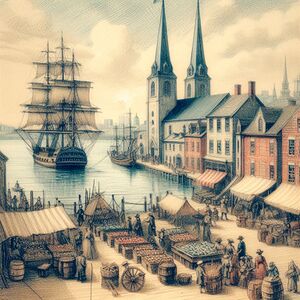
Arcer music, sport, and alcohol are particularly esteemed for a non-Levantine nation. Arcer country music is closely related to its distnat Occidental cousin, Urcean country music, however Arcer country music has a higher aggregate of musicians, performers, and concerts across Crona and other parts of Ixnay. Country music is particularly important in Northlea Governorate, as it is central to the Arcer Heartland. Arcerion is also home to both Catholic, Anglican, and Protestant Churches, despite being officially secular, it usually has Christian officials and clergy at major national events such as Christmas Mass or the inauguration of the Prime Minister. Arcerion also has the oldest universities in mainland Crona, namely Ardmori Anglican University, which continues to make major contributions to Arts programs such as philosophy, history (specifically Cronan studies), economics and social studies. As well, Arcerion's Royal Arcerion Institute for Engineering is consistently ranked as one of the premiere engineering and technical study institutions in Ixnay, and has produced a number of engineers and architects that have created massive impacts on their respective fields of work across the globe.
Arcer culture also has been altered by two major waves of migrants, firstly the Ardmori Diaspora in the 1930s and 1940s following the Ardmori Civil War. While there has been significant impact culturally from Ardmore, as Arcerion was initially founded as a Crown Colony, the modern migration of Ardmori citizens served to keep the traditional roots of Arcer culture grounded. The second major wave of migrants came after the Second Great War, which saw a number of non-Cronan Ængles migrate to Arcerion during the 1950s through the 1970s, particularly in Howland and Foxhey Governorates. Culturally, these migrations helped Arcerion's population, and provide a wider Arco diaspora contributing to the larger Arcosphere.
Sport is a key component to Arcer culture, with rugby being both the national sport and the traditional area of dominance for the Arcer people. Internationally, Arcerion's rugby teams have dominated in Ixnay's international rugby tournaments, as well as in the men and women's rugby events in the Istroyan Games. Owing to their colonial roots, horse racing is also exceptionally popular in Arcerion due to the 'cowboy' culture, which also includes a subset of horse-related sport and one that is unique to Arcerion, that being rodeo. Arcerion also has polo and golf owing to the wealthier Ardmori immigrants and the nascent peerage system that was in place in the 19th and early 20th centuries.
History
Arcerion's history is considerably shorter than many of its Cronan contemporaries, such as Alstin or The Cape, however during this period it has maintained a surprisingly unified cultural and societal attitude towards its traditions and heritage. Cultural influences from the various immigrant demographics resulted in a 'melting pot' that combined together to form modern Arcer culture as it is known today by the early 20th century. Arcer culture has notably been influenced by two non-Ardmori cultures, those being Gaels and Burgoignesc culture.
The arrival of Ængles and Gaels with the early immigrant waves in the late 1700s and early 1800s influenced the earliest cultural and societal traditions. Much of the 'old country' systems were merely co-opted and replicated, such as a peerage system, landed gentry, and naming conventions for everything from ships to buildings and roads. This is no more evident than the Regimental System of Arcerion, which itself is an identical clone of the now-defunct Ardmori Regimental System. Ængles and Gaels introduced unique language, traditions, and social structures to Arcerion, notably in the older Governorates of Moorden and Norham. In the generations following, the expansion into the Arcer Heartland by primarily Gaels and Ardmori immigrants (and later refugees) would form the genesis of Arcerion's cowboy culture and
Arcerion is unique compared to other Occidental cultures that exist for hundreds, some even thousands of years, as much of its heritage and culture only began in the 18th century. The societal memory and consciousness then is more focused towards ideas such as community, frontier spirit, as well as rugged individualism vice existing or clinging to older Levantine traditions.
Following the end of the Second Great War, the larger influx of non-Occidental peoples and a change in Arcer Immigration law began to see a larger change in the demography of Arcerion away from Ængles and Gaels. A higher proportion of Polynesian and Vallosi peoples began emigrating to Arcerion throughout the Occidental Cold War, however these still made up a minority of impacts on Arcer culture.
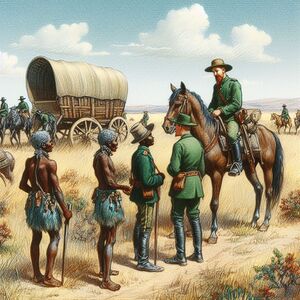
Language
The first spoken languages within the confines of what is today modern Arcerion were the Indigenous languages spoken by the various tribes that made up the South Songun Civilization. However the introduction of Arcer and Ardmori settlement began to push these Indigenous tribes out of the Arcer Heartland and Southern Arcerion, these were replaced by the Ænglish language, which became the primary spoken and written language in Arcerion. In modern Arcerion, Ænglish is the only recognized national language, however Governorates with a larger population of Gaels, such as Foxhey and Northlea Governorates do allow the teaching of Gaelic in the school system and there are several universities with large Gaelic social studies and language programs, such as Northlea University. Due to this, Arcerion is largely considered to be monolingual, with over 90% of the population using Ænglish as their first spoken language and mother tongue.
There has been several attempts by Gaelic-heritage municipalities and Parliamentary ridings to have Gaelic recognized as the second official language of Arcerion, notably after the end of the Second Great War, however to date no law has been passed.
Regional Accents
Arcerion has a variety of regional accents that developed from their source and mother tongues of Ænglish and Gaelic, primarily from mass migration, regional and cultural slang, as well as impacts from their environment and to some extent, the percentage of upper-class education available during the 19th and 20th centuries. Particularly in the Arcer Heartland, there is a higher percentage of the language mixed with Indigenous tribal dialects, which blends in a way that is still noticeably Arcer Gaelic, however uses hundreds of indigenous words to describe actions or proper nouns. Certain regional dialects also have a higher social or cultural prestige associated with them. The traditional Ardmori upper-class accent has been found in a higher proportion in Southern metropolitan Arcerion, specifically Kurst and Chester-on-Moore, owing to the high influx of wealthy Ardmori families after the Ardmori Civil War that emigrated as refugees.
The main Arcer regional accents can be grouped into four main sub-groups, however there can be differences between towns or within these subdivisons, such as the difference in the 'Island Accent' that is common between Foxhey and Howldand Governorates is still noticreably different between the two. The four main sub-groups are: Southern Metropolitan, Arcer Heartland (sometimes referred to as Heartland Cowboy), Island Dialect, Northern Mountain.
Arts
Literature
Arcerion's modern literature and arts programs as sponsored by the government began in earnest in the 1890s with the grant of semi-sovereignty. Since then, many prominent Arcer painters and authors have begun to produce works of modern art or literature that have gained international renown. Many Arco authors have created detailed works and histories such as Gin, Guns, and Galleys which was a historical analysis of Arco-Burg relations.
Arcerion also has a significant body of works on military history, notably No Soldier's Home.

Theatre
Music
Arcer culture has evolved as has its music over two centuries of nationhood. In its early years, during the early colonial period and up to the landmark 1890 Royal granting of semi-sovereignty and partial independence, Arcer culture largely followed Occidental trends for classical music and orchestras, with the pattern largely remaining under the influence of Ardmori high society and the upper echelons of Ardmori societal classes that had emigrated to Acerion. However with the late 19th-century settlement of the Arcer Heartland, folk music and country music began to evolve into its own distinct genre. Country music would continue to evolve with the introduction of modern instruments such as guitars and the harmonica, a free reed wind instrument developed from Alshari and Audonian influences in Dalfearn in the early 1900s.
The usage of guitars, folk music, and harmonicas, along with traditional drum instruments gave birth two a pair of distinctly Arco genres of music that by 1930 dominated concert halls and radio stations in the nation, those being Cronan Blues and Arcer Folk/Country (historical terminology varies). Arcer country music would grow in popularity, remaining the main form of music and spawning a number of offshoots or sub-genres, such as Heartland Rock and River Folk Music, all of which would continue to evolve to their modern forms.
Traditional Ængle and Gaelic music utilizing instruments such as flutes, bagpipes, and brass instruments continue to find usage in modern political and major national events. Military bands and music, with their origins being the military bands that helped commanders organise soldiers in battle and keep pace on long road marches, carry on the historical lineage of generations of Arcer soldiers in modern parades. The Presdale Country Music Festival remains the largest country music event not only in Crona, but in Inxay, attracting large amounts of country and folk singers, notably with similar artist from Urcea, as well as non-country acts from other countries such as Alstin and Burgundie. It regularly draws tens of thousands of international visitors from across Ixnay, making it one of the major attractions in Arcerion for tourists. Presdale has continued to be the centre of modern country music, with notable record labels such as Heartland Studios and Leigh Records signing international folk and country artists, with Presdale being an Ixnay leader for the genre.
Classical Music
Country Music
Blues and Rock Music
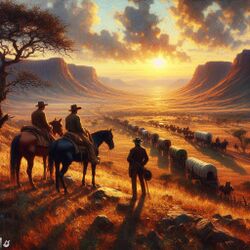
Cinema
Visual Arts
Arcer frontier painting and art has also gained a cult following in both Crona and parts of Levantia, with the painter Hugo Davidson portraying different scenes of frontier life, such as wagon trains, cattle ranching, and defense of the Arco colony. Modern paintings of Davidson's are highly sought after by Ixnay's elite, as the limited amount, niche topic, and high quality make them exceptionally rare to find outside of the Southeastern Cronan peninsula. Arcerion also has an affinity for Urcean and Southern Levantine Classical art, with it being a consistently requested item during diplomatic and cultural exchanges. Arcerion keeps many of the donated pieces of literature in the Arco National Archives, located in Kurst, and concurrently the artwork at the National Gallery of Arcerion, in Kinnaird.
Architecture
Folklore
Piracy
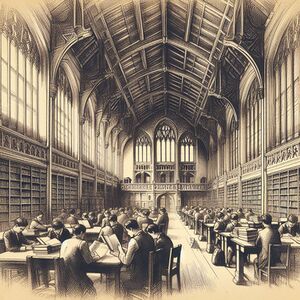
Frontiersman
Ardmori Folk Tales
National Parks, Museums, Libraries, and Galleries
The architecture in Arcerion can largely be categorized as Occidental in nature, with the majority of influences coming from Levantia and traditional Gothic and Ænglish influences. The architecture in Arcerion was first simple wooden homes and buildings constructed from shipping lumber or from the trees found in Southern Arcerion. There is considerably less heavy stone masonry or works that are common in Levantia, such as Grand Cathedrals or Castles, as Arcerion had no distinct Occidental Medieval period. However there are a number of stone-and-earth forts, as well as some medium-sized stone churches that were built during the 19th century. Prominent large architectural structures from the colonial era include the Confederate Parliament, the Supreme Court, Fort Ellis, Fort Chester, the Arcerion Anglican Church, St. Thomas' Protestant Cathedral, and the Watchtower at Port Gibson.
Arcer inland homes were at best fortified villages. This defensible-commune style of building integrated wooden homes with earthern ramparts and wooden walls, with a gate and central grass or dirt square to hold horses, livestock, or wagons. This style of building was often referred to as a Safekeeps, an homage to the small Levantine forts of the medieval era. Safekeeps were popular into the 1940s, but with the decline of the Indigenous population and their raids, as well as the growth of the Arcer state's ability to police internally and patrol the border areas, they gradually faded out of style. There has been some revivalist attempts at re-creating Safekeeps in the Northern Border areas of Norham and Northlea Governorates due to the refugee crisis and border conflicts with modern Kelekona and Titechaxha, and these feature modern improvements such as security cameras, barbed wire fences, and floodlights. Safekeeps of the colonial era usually housed a dozen families (~70-100 people), and modern Safekeeps are considerably smaller, with typically just a few dozen residents.
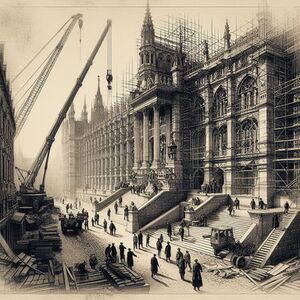
During the late 1860s, the usage of limestone and marble, as well as other advanced masonry began to become more prevalent with the economic boom of the mid-colonial era. Larger stone structures and buildings began to be erected more often, including universities, large marketplaces (made of brick and steel) as well as the expanded Crown Governor's Residence (now the Prime Minister's Residence). The Kurst Fire of 1867 damaged much of the downtown core of Arcerion due to its primarily wooden nature, and as a result freed up much real estate in the colony's capital for new buildings.
By the late 1800s, Burgoignesc architecture and styles were introduced and there was a heavy influence as the influx of Burgoignesc traders, merchantmen, and sailors had begun to become extremely common place in Arcerion, specifically the Southern Metropolitan areas. This was often referred to in the architectural and engineering communities as the Istroyan Revivalist period, where there was an increase in fine masonry and works, especially with a specific attention to detail and aestheticism. Combined with the late economic boom and the success of the Second Bush War meaning greater inland expansion and therefore a larger GDP, Arcerion's upper classes also began to construct a number of cottages and estate homes. Estates as they are known in common terminology, are large acreages featuring numerous small cottages and even villages, with a large multi-wing home central to the property, usually constructed out of stone, glass, and with wide rooms, high ceilings, and large doors. The Estate period saw much of the Ardmori wealth that had funnelled into Arcerion expand into the areas surrounding Kurst and Chester, leading to a growing middle and upper class having both summer cottages as well as winter city residences. Most of these buildings were unfortified, as by the time of the Third Bush War, most indigenous raids were limited to the Arcer Heartland and there was little need for fortified homesteads.
Piers and seaside wharfs became popular with the early colonial period, as well as boardwalks and pedestrian walkways in cities. Arcerion is known architecturally for having very walk-able cities, and the Chester Boardwalk is a major tourist attraction, as it is the oldest wooden seaside boardwalk in Crona.
There was a significant architectural boom after the Second Great War, with the return of tens of thousands of Arcer servicemen. Brick homes, with wood frames and concrete foundations, become extremely popular as they were easily zoned and constructed by the government. The Confederate parliament authorized the construction of thousands of "Servicemen's Huts" as they were called, and these post-war homes exist in every major Arcer city into the modern period. Although every decade sees less and less standing as they are destroyed and replaced with more modern multi-family dwellings such as condominiums or medium-rise apartments, these brick homes are a significant portion of the Arcer suburban cultural heritage for the post-war generations.
Science and Technology

Colonial Agriculture
Religion
Arcerion is a nation that has a variety of religions, most of them coming from immigrants in Levantia. The only non-Levantine religion belongs to the Indigenous peoples of Arcerion, who worship a variety of different gods and deities that are not Occidental. Arcerion has a growing irreligious movement that believes that as the government is already secular, even if founded upon Protestant values and teachings, that the population should trend this way as well. Over the 20th century, the irreligious movement has increased markedly, and by 2022 it was at its highest, and estimated to continue to grow among young people and new immigrants. Efforts by the Protestant Church of Arcerion to combat the growing rise of irreligious youth have seen a level of cooperation between Anglicans and Protestants not usually seen in Arcerion. The majority of Catholics in Arcerion arrive from Urcea or former members of the Holy Levantine Empire. Religion in Arcerion is not entwined with the state as in some other nations, and it has been secular since the granting of semi-soveriengty in 1890.
Arcerion's religious background began with the introduction of Anglican, Catholic, and Protestant missionaries as early as the late 18th century. These missionaries established not only inland monasteries and churches, but also helped found many of Arcerion's earliest and oldest institutions, notably the Ardmori Anglican University. Arcerion has continued to maintain a high level of religious adherence, with the majority of politicians and senior business officials in the nation declaring some level of religious affiliation.
In the Arcer Armed Forces, the Chaplain Corps is a branch of the Army that provides religious services such as mass, last rites, baptisms, and marriages (including civil unions) to members of the Armed Forces. The Chaplain Corps also assists with social welfare programs in the military, assisting with marriage and family counselling, and programs such as after school care for Armed Forces members.
Cuisine

Arcer cuisine is largely based on its Ængle roots and Ardmori cooking styles, with traditions and recipes associated with the Ardmori Isles as well as with influences from Gaelic peoples. It has evolved after centuries of different societal and political change and is considered to be a blend amongst different cultures, with a specific focus and basis in foodstuffs found native to Arcerion. The cuisine consists mainly of foods and crops farmed in the Arcer Heartland, fished from the Songun and Malentine Seas, and grown on the Moorden coastline. In Foxhey for example, chowder and seafood stews are extremely popular dishes evolved from maritime and fishing traditions.
The greatest impact to cuisine has been the influence of Indigenous cultures and native dishes to Arcer cuisine. While Occidental methods of subsistence farming as well as modern agricultural practices helped grow the amount of available foods to the Arcer population, frontier settlers often had to eat similar diets and dishes to the Indigenous peoples they were settling amongst, as their farms had not yet begun to yield. Baked corn and maize, wild rice, turkey, and syrup taffy were all staples of the frontier diet. Many of these dishes became popular and in modern Arcerion are served as "Early Arcer" dishes. At histroical fairs, it is also common to find Indigenous reenactors making these pre-settlement foods.
Arcer peoples in the Heartland also have made barbecue, or grilled and smoked meats, a significant part of their diet due to the large cattle ranches and sheep farming. Barbecue ribs, pulled pork, and other 'cowboy' style dishes are cooked over an open coal fire or smoked in special smokehouses and sold. Barbecue and jerky continue to be one of the main aspects of Arcer cuisine that tourists enjoy the most, with barbecue products sold at major national holidays, carnivals, festivals, and sporting events. Barbecue dishes are often accompanied by potatoes and cabbage sides grown in Moorden or Norham, the two main crops grown there. Arcer culture also makes use of its wheat, barley, and rye crops in addition to other grain produce to distill multiple kinds of alcohol, the two most popular being gin and beer. Arcer wines also have played an outsized role in the Cronan alcohol market. Arcer gin has been a staple throughout its history, including usage in the Arcer military.
Sport
Sports in Arcerion have a long history back to Ardmori soldiers posted to Kurst playing football in the summers to pass time, to horse racing and cattle sports in the Arcer Heartland. Today, Arcerion's most popular sport is rugby, which is organised and played by teams in the National Arco Rugby League, or NARL. The sport regularly draws millions of fans to attend its regular season games, and the viewership has remained steady throughout the decades, even with a switch to more modern methods of viewing such as internet live-streaming. For individual sports, Arcerion also has a number of popular golf courses, and sport shooting remains one of the main national past times.
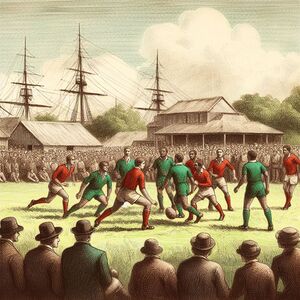
Arcerion also has a special relationship with the Istroyan Games, as the capital city of Kurst was the first Cronan city to old the Olympiad event since its founding, with the Kurst Sumer Games held in 1970. This was to be followed decades later by the 2034 Kinnaird Summer Games, the second time Arcerion was to host the summer games. Arcerion also holds the distinguishing feat of being the first nation to host winter games in Crona, with the 1984 Easthampton Winter games, which was a chance for Arcerion, recently out of the Fourth Bush War, to display the beauty of the Ailach mountains and how modern of a city Easthampton was. Arcerion held a fourth Istroyan Games on its home soil in 2016, utilizing the older Easthampton facilities with less than a year's notice as the games were originally intended for Akwesasne, Quetzenkel but had to be relocated due to the South Nysdra War. Notably, Arcerion won gold in the Coria 1954 Summer Games for Men's Rugby Sevens, with their subsequent appearance in the Cancale 1958 Summer Games winning bronze.
Arcer citizens also regularly participate in winter sports, with ice hockey and alpine skiing being amongst the national favourites. Ashden, a small town in the northern part of Northlea Governorate, in the Northumbraeland Mountains, is one of the most popular ski destinations in Ixnay.
Rugby
Horse Racing
Track and Field
Football
Shooting Sports
Swimming
National Costume and Dress

Early Arcer colonial dress was incredibly utilitarian in nature. Due to their placement as a colony, the dress of the larger Arcer people is a makeup of of several different cultures and styles. Regionally, there is also flavours and traditions that while rooted in a similar mix of Ardmori, Ængle, and Gaelic cultures, have their own nuances and distinctions that mark them as unique. These are most commonly associated across generations, status and income, as well as geographic location (ie. metropolitan fashion versus Arcer Heartland daily wear).
Military uniforms in Arcerion are the closest to a single unifying form of national dress. The traditional red tunic or coat, black shako or tricorn hat (a bearskin for Guards regiments) and brass buttons adorned with Regimental insignia. Each regiment has its own distinct uniform, flashes, patches, cockades, buttons, or symbols that adorn their uniforms. There is a wide dispersion in the consistency of military dress uniforms across the army, from infantry, to cavalry, and the difference between Guards and Rifle regiments. The trenchoat was an Arcer invention, first issued to Arcer soldiers in the First Great War, has since become a fashion staple across Ixnay.
Sporting or hunting dress in Arcerion varies wildly depending on socioeconomic or cultural class within Arcerion. Tweed and flannel sporting uniforms, with knee-high riding boots and twill caps are common for the upper classes in Arcerion and are particularly common in the Southern Metropole, whereas this is contrasted heavily inland where hunting is seen more as a common man's recreational activity. In the Arcer Heartland, denim and camouflage hunt attire is considerably more popular, and in some cases is daily wear for members of the rural middle and lower class.
Business and formal attire in Arcerion have similaratiies across all social and economic classes of the Arcer society, but have certain trends depending on cultural background. The suit and tie became popular in the early 20th century, and have remained as formal wear with some improvements to materials and colours over the following decades. Fashionable improvements such as mandarin collars or other forms of suits found in Alshar or Vallos are not generally worn and seen as outlandish by most Arcers. Dinner formal wear, in the military known as mess dress, is common in Arcer's Southern Metropole, and features short cut black tuxedos and stiff white shirts, as well as black bowties. Formal dinner dress is a staple in Arcer culture with a variety of social events, from dinners to formal concerts and weddings often making it a requirement. With formal dinner dress, honours and awards can be worn to adorn it, both military and civilian. There is in between versions of casual daily wear and formal dress, and this is typically signified by a bowler hat, a piece of an Ardmori dress, and later the top hat or flat cap. Formal dress for people of Gaelic descent will often involve a kilt or Gaelic short jacket, featuring the tartan of their clan or village.
Ardmori immigrants, especially after the Ardmori Civil War and the mass migration of refugees in the 1930s through 1950s generally are considered to be more formaly dressed and adhere to 'Old World' fashion trends and styles of dress, whereas naturalized Arcers are considerably more relaxed in their daily dress.
Modern Arcer fashion largely revolves around denim jeans, flannel or button-down shirts, and leather footwear (in the Arcer Heartland often cowboy boots). In cities and metropolitan areas, daily dress ca be similar to that of the Arcer Heartland, however slacks, polo shirts, and blazers are much more common for members of the middle class and upper class.

Gaels
AEngles
Cowboy/country
Symbols, Flags, and Emblems
Armori Crown
Red Lion
1790
Naming Conventions
Aenglish
Gaelic
Ardmori